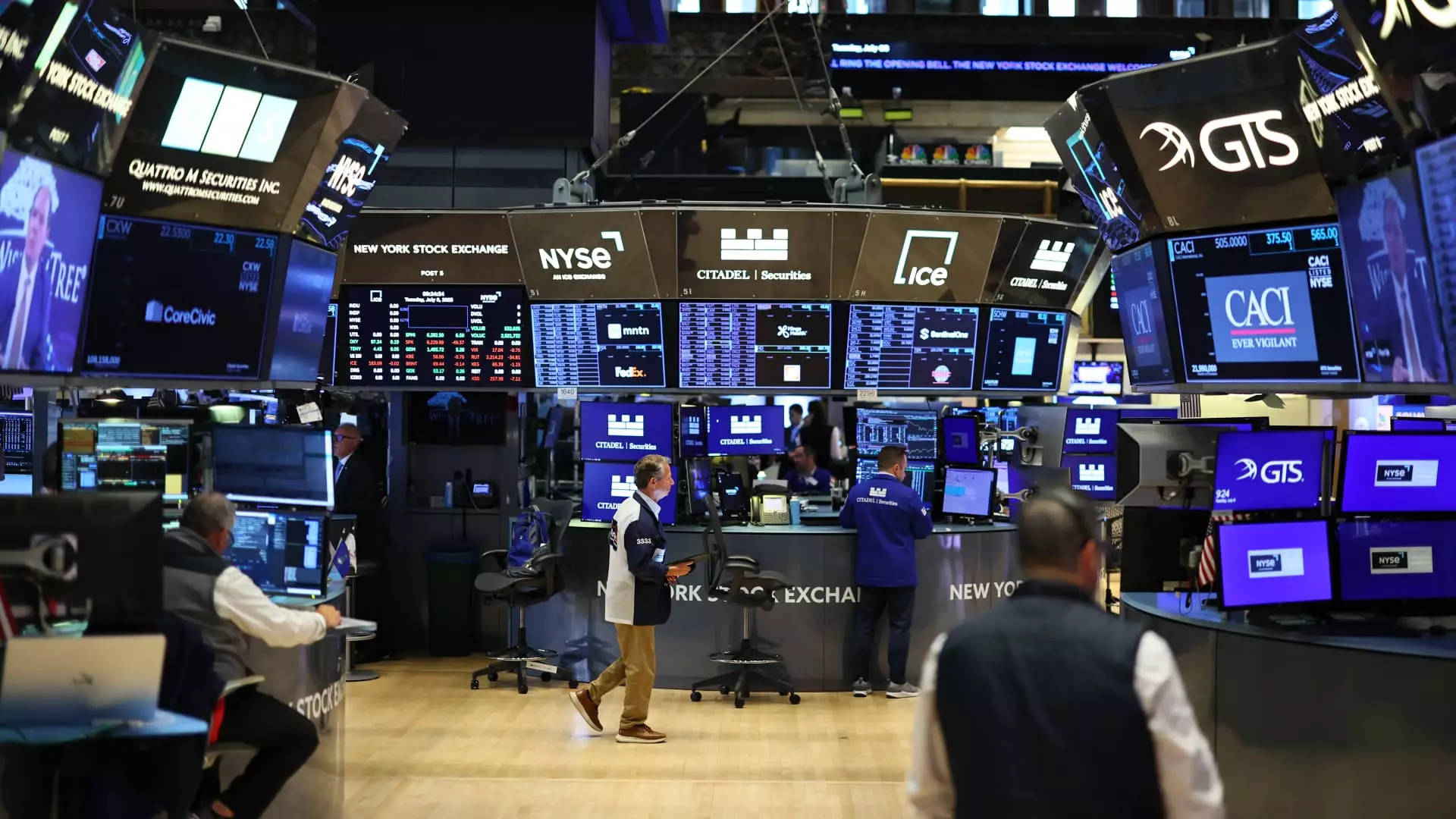In the current financial climate, the optimism that once fueled bullish markets is unraveling, exposing the underlying vulnerabilities of our economic system. The optimistic forecasts of growth are increasingly challenged by sobering realities: a slowing global economy, persistently high inflation, and the looming specter of an impending slowdown that could cripple investor confidence. This climate demands not just caution but a fundamental reevaluation of where and how we allocate our resources. Relying on traditional growth narratives and short-term gains is a perilous game; instead, investors must prepare for a prolonged period of instability and recalibrate expectations accordingly.
The prevalent narrative, driven by financial institutions and market experts, suggests that a cautious shift to fixed income will serve as a safe harbor. However, this perspective, while seemingly prudent, overlooks the deeper structural flaws in our economic landscape. The Federal Reserve’s tentative moves toward interest rate cuts are unlikely to stem the tide of economic contraction and may only serve as temporary patches on a crumbling financial infrastructure. The idea that bonds, touted as the ultimate safe haven, will provide substantial cushion neglects the reality that debt markets are themselves subject to the whims of geopolitics, fiscal policy, and inflationary pressures. Blindly shifting into bonds at this juncture risks underestimating the volatility ahead.
The Fallacy of Fixed Income as a Long-Term Solution
Relying heavily on fixed income assets—such as government bonds—may seem like a rational strategy amid uncertain times. Vanguard’s recent launch of new bond ETFs underscores this approach: a confident bet that U.S. Treasurys and government securities will serve as the backbone of a resilient portfolio. Yet, this optimism ignores the fact that bond yields are historically low relative to the inflationary environment, meaning real returns could be tepid at best. When inflation continues to outpace bond income, investors face the risk of erosion in purchasing power. The assumption that bonds will act as a reliable counterbalance is rooted more in hope than in a thorough assessment of risks.
Furthermore, the Federal Reserve’s focus on supporting employment—potentially through interest rate cuts by year’s end—may exacerbate inflation rather than control it. This paradoxical approach risks creating a scenario in which inflation persists or even accelerates, undermining the very rationale for fixed income investments. As bond markets fluctuate and yields stabilize around new lows, investors could find themselves locked into assets that fail to keep pace with inflation, thereby undermining their long-term financial security.
Strategic Shifts in Investing: Embracing a Critical, Adaptive Approach
Instead of clinging to the illusion of predictability, savvy investors should consider embracing resilience through diversification and strategic flexibility. BlackRock’s advocacy for a “barbell” approach—balancing cash, bonds, and equities—exemplifies this mindset. Buffer ETFs, which offer downside protection while capturing some upside potential, are not just trendy instruments; they reflect a crucial recognition that markets will remain unpredictable and often hostile to investor interests.
Far from being an overly cautious retreat, this approach aligns with a realist’s understanding of today’s complex macroeconomic environment. It encourages investors to avoid overexposure to high-risk equities rooted in speculative bubbles and instead prepare for a turbulent economy by safeguarding capital, staying alert to macro themes like infrastructure growth, and maintaining liquidity for strategic opportunities. Recognizing geopolitical tensions and global fragmentation, investors might find greater value in sectors that serve as economic backbone rather than those driven by fleeting fads or unproven technological narratives.
In essence, the key to weathering the storm lies in a willingness to critically question prevailing narratives, adapt to evolving conditions, and prioritize long-term resilience over short-term speculation. It is dangerous to accept facile solutions—like chasing yields in bonds or betting on megatrends—without scrutinizing their sustainability. A well-rounded, skeptical perspective that considers structural vulnerabilities is essential if we are to navigate the treacherous waters ahead confidently.

